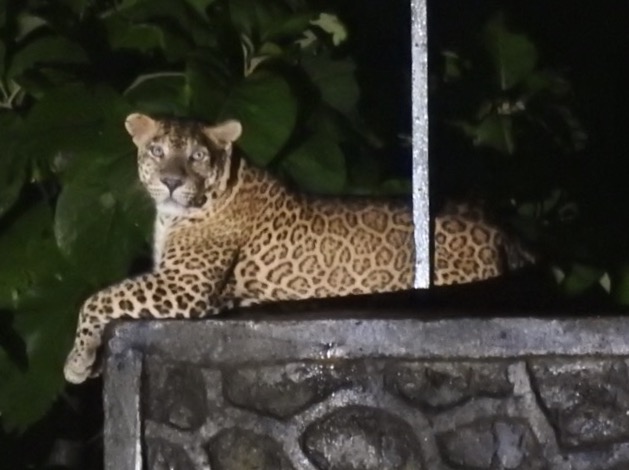Conservation in a Time of Pandemic
The first time I learnt of human-leopard interactions in Mumbai was back in the early 2000s, when news of a leopard entering a housing society along the periphery of Sanjay Gandhi National Park (SGNP) reached my ears. Back then, I was a student, and was intrigued by the fact that a wild leopard had actually entered a housing society in a metropolis in the 21st century, just barely 10km from my own house! I never imagined that one day I would be working to study human-wildlife interactions and encourage coexistence.
This project has given me the privilege of interacting with residents living in housing societies, tribal hamlets, slums and bungalows along the periphery of SGNP. Speaking to residents from different areas gave me insight into how the presence of these leopards have varied effects on people depending on their location, type of housing and at times even their economic and social class. Moreover, every area would need a unique adaptation of the existing precautionary measures adopted by Mumbaikars (citizens of Mumbai). Surveying the area and discussing the multiple issues with residents helped us deal better with the situation at hand. With each interaction, I started appreciating the pragmatism of these communities and the intelligence of leopards. Together, they are setting a unique example of how humans and large carnivores can coexist despite the odds.
The year 2020 gave us reason for pause. People around the world grappled with a sense of vulnerability, which made many question our fast-paced lives and the impact we are making on the environment. COVID-19 has managed to disrupt the global economic system. Mumbai was no different and it experienced one of the most severe restrictions in the world after the Indian government announced a nationwide lockdown in March 2020.
The city that never sleeps came to a grinding halt for several months. The city was transformed. The city was decidedly quieter and the air was much cleaner. People started sharing videos of peacocks walking on otherwise busy streets, while dolphins were spotted in Mumbai Harbour and people across the city started hearing birds again.
The lockdown also provided a respite to SGNP’s wildlife, which started venturing beyond the park more frequently. Residents around SGNP reported sightings of bonnet macaques, common langur, sambar and spotted deer (chital) in the recreation area of the park and outside. At the same time, residents living along the periphery of SGNP also reported multiple leopard sightings. Perhaps the residents had more time on hand or the leopards may have been more active in the area in the absence of people. I suspect both factors contributed to the spike in reports of leopard activity around SGNP.
For two species to coexist and share space and resources, they both need to adapt and accommodate each other’s presence. Leopards seem to do this by avoiding people, and their presence in these areas was a direct result of people’s absence. However, how willing were people to tolerate the presence of leopards in their neighbourhood? While most people remained calm, some were agitated by the presence of leopards in their midst. Our normal response would have been to engage in a dialogue and help the residents identify vulnerabilities to address (such as lighting, waste disposal etc) and train them in various precautions. But these were not normal times.
In our normal operations, we would have direct discussion with residents during our survey trips around the area to help us better comprehend their lifestyles, and also to establish a friendly presence in the community. Unfortunately, we were unable to do so during the lockdown.
So, like the rest of the world, all project activities, including interactions with various stakeholders, moved from the real to the virtual world. We started holding dialogues with people over online platforms and residents were very responsive and encouraging. In addition, several socially-distanced sessions were also held in person for security guards and other staff members to help them acquire necessary skills to avoid conflicts with leopards and ensure that they and all residents remained safe.
Though sightings increased, there were fewer panicked calls and demands for trapping leopards. Thankfully, there were no untoward incidents during this period. It was fascinating to hear residents refer to leopards as neighbours. On multiple occasions, I have received photographs shot by various residents showing leopards sitting on the boundary wall of their housing society.
Though the lockdown to curb the spread of COVID-19 resulted in uncertainties and challenges, it also highlighted the need for sensitivity towards the environment and sustainability. The residents of Mumbai, both humans and leopards seem to have responded relatively well to the challenges by accommodating each other’s presence. The new interest also resulted in a spike in people’s interest in volunteering with our Mumbaikars for Sanjay Gandhi National Park project and to find out more about the work being done.
The new challenge is to sustain this increased interest in the environment to facilitate human-leopard coexistence along with more sustainable lifestyles. It is possible that the COVID-19 pandemic may well be the turning point that might transform a forest department project on human-leopard interactions into a mass movement on human-leopard coexistence.





